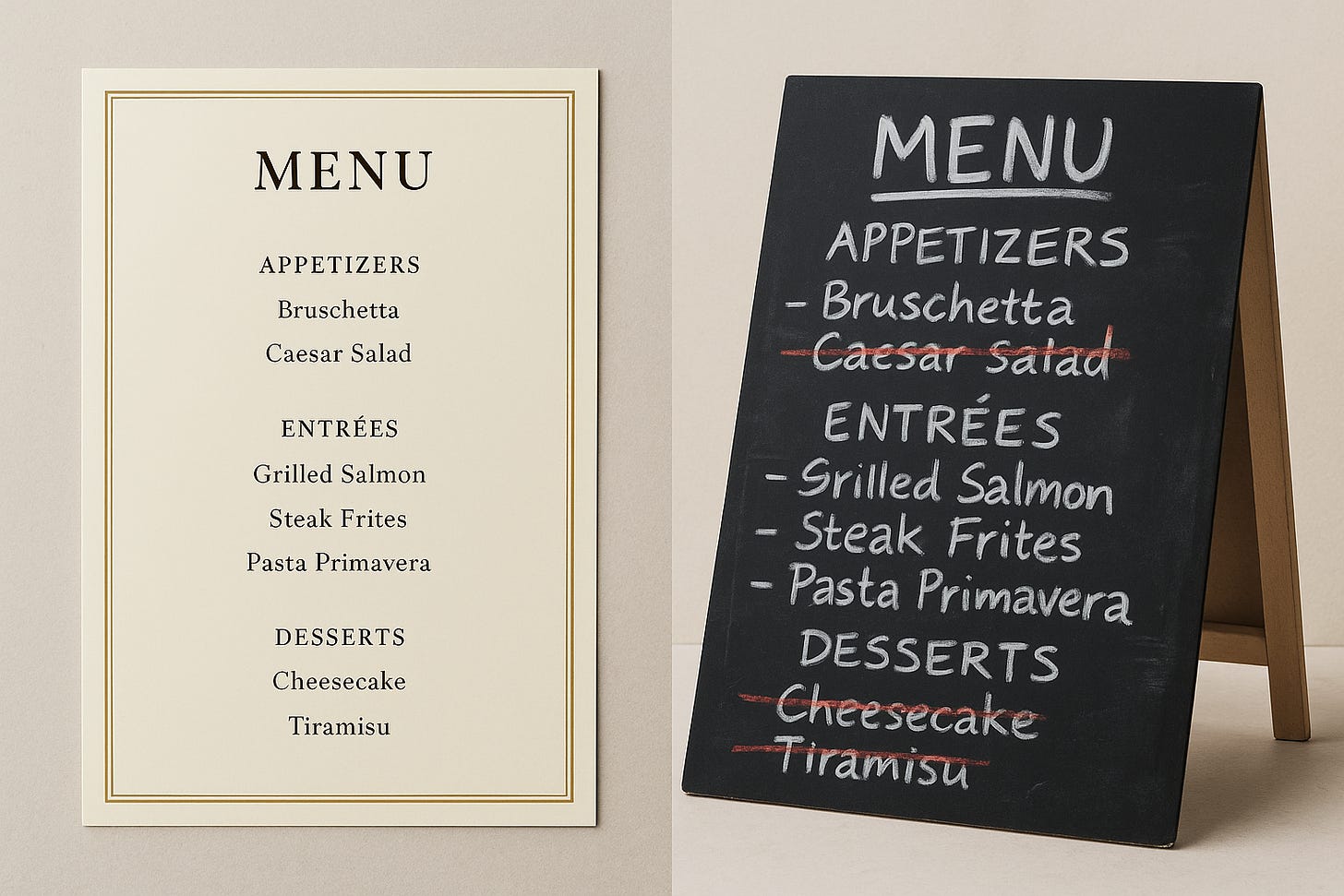At a restaurant, you sit down and flip open the menu.
The paper is heavy cream stock edged in gold trim. Appetizers, entrées, and desserts are neatly grouped, each set in a clean serif font. Nothing feels out of place. It all feels natural. The menu promises an experience filled with class, quality, and order.
But imagine the same kitchen presenting the same dishes in a different way. There is no cardstock, no gold trim, no tidy rows. Instead, an A-frame stands near the bar, streaked with the dusty residue of chalk. Dishes appear in white handwriting with three already crossed out in red. The whole thing feels temporary, improvised, and alive.
The food has not changed. The structure that delivers it has.
That shift in mood has nothing to do with recipes or ingredients. It comes entirely from the way the choices are arranged in front of you. One structure puts you at ease, another keeps you on your toes, and neither needs to announce itself for you to feel the difference.
Writing works the same way. You can present the same ideas with the same care, but the form you choose shapes what the reader experiences. Sometimes the structure invites them in with clarity. Other times it unsettles them, pulling them into dissonance they can’t quite name.
The difference becomes clearer when you look at the common forms we rely on every day.
Cues Beneath the Form
Think about the kinds of structures we use every day. A checklist template doesn’t just organize steps. It tells the reader this is something they can complete quickly, that progress is visible and measurable. A case study template doesn’t just hold a story. It signals proof, a narrative arc with a problem, a solution, and a victory at the end. A troubleshooting guide doesn’t just list solutions. It creates the sense that recovery is possible, that a path forward exists even when something is broken.
None of this happens by accident. The template is already whispering cues about how to read, what to expect, and how to feel while moving through the material. Most readers never notice it. They just register whether the experience felt clean and clarifying, or confusing and off-key.
However, when the cues are mismatched, the same template that creates clarity can just as easily create confusion.
Keep reading with a 7-day free trial
Subscribe to Refined Draft to keep reading this post and get 7 days of free access to the full post archives.




